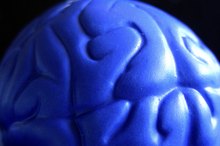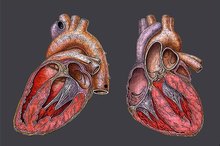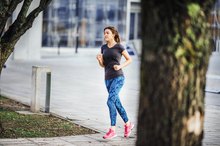The Effects of Immobility on the Cardiovascular System
Staying immobile for long periods of time can have drastic effects on your health. In fact, three weeks of complete bed rest results in cardiovascular decline similar to that of 40 years of aging, reports a 2009 study in the Journal of Gerontology, Medical Science 1. Immobilization leads to structural changes in the cardiovascular system that negatively affect its functionality. The most pronounced symptom of these changes is a tendency toward fainting when moving from lying to standing, known as orthostatic intolerance.
If you are experiencing serious medical symptoms, seek emergency treatment immediately.
Structural Changes
Muscles that are not constantly stressed begin to get smaller and lose their strength. A 2008 report in the New England Journal of Medicine cites a 15 percent decrease in cardiac muscle mass after 12 weeks of bed rest, and 25 percent decrease in mass in patients permanently immobilized due to spinal cord injuries 2. The loss of cardiac mass decreases the force of contraction. When a bed-rest patient attempts to regain mobility, the heart is unable to contract with enough force to fight the pull of gravity. This limits the amount of oxygen-rich blood reaching the brain and decreases the amount of blood returning to the heart from the lower body. Both of these conditions ultimately result in orthostatic intolerance when moving from lying to standing.
- Muscles that are not constantly stressed begin to get smaller and lose their strength.
- When a bed-rest patient attempts to regain mobility, the heart is unable to contract with enough force to fight the pull of gravity.
Functional Changes
How Do the Walls of the Atria & Ventricles Differ?
Learn More
Stroke volume is the amount of blood ejected from the heart every beat and is dependent on the amount of blood that fills the ventricles before each contraction. The stronger a cardiac contraction is, the faster the muscle springs back into its normal resting position. This springing back acts as a suction to pull more blood into the ventricles for the next round of contractions. A 2008 report in the Journal of Applied Physiology states that cardiac maladaptations to prolonged bed rest prevent the suction from occurring and limits the ability of the heart to deliver adequate blood during the following heartbeat. The reduction in cardiac muscle mass and the altered contractile strength contributes to a continuous cycle of inadequate blood flow when a person moves from lying to standing.
- Stroke volume is the amount of blood ejected from the heart every beat and is dependent on the amount of blood that fills the ventricles before each contraction.
- A 2008 report in the Journal of Applied Physiology states that cardiac maladaptations to prolonged bed rest prevent the suction from occurring and limits the ability of the heart to deliver adequate blood during the following heartbeat.
Pressure Changes
Pressure sensors of the body are located in the carotid arteries leading to the brain, and in the section of the aorta that attaches directly to the heart. The purpose of these sensors is to regulate blood pressure throughout the body by causing blood vessels to expand or constrict. Normally, moving from lying to standing causes a quick constriction of the blood vessels in the lower body that forces blood back to the heart. In the text "Human Cardiovascular Control," Dr. Loring Rowell explains that prolonged bed rest changes the sensitivity of the body's pressure sensors 4. This change means that a greater drop in blood pressure has to occur before the body will constrict the vessels. Readjusting the sensitivity of the pressure sensors predisposes a bed rest patient to orthostatic intolerance once mobility is regained.
- Pressure sensors of the body are located in the carotid arteries leading to the brain, and in the section of the aorta that attaches directly to the heart.
- Normally, moving from lying to standing causes a quick constriction of the blood vessels in the lower body that forces blood back to the heart.
Related Articles
References
- "Journal of Gerentology: Medical Sciences"; A 40-Year Follow-Up of the Dallas Bed Rest and Training Study; Benjamin D Levine, M.D.; 2009
- "New England Journal of Medicine"; Cardiac Plasticity: Mechanisms of Disease; Joseph A Hill, M.D.; 2008
- "Journal of Applied Physiology"; Diastolic Suction is Impaired by Bed Rest: MRI Tagging Studies of Diastolic Untwisting; Todd A Dorfman, M.D.; 2008
- "Human Cardiovascular Control"; Loring B Rowell, M.D.; 1993
Writer Bio
Carrie Quinn has been writing since 2010, and she has been teaching or researching health and fitness concepts since 2000. Quinn holds a Master of Science in exercise physiology and national certification as a registered clinical exercise physiologist through the American College of Sports Medicine. She graduated from the University of Kansas.






